Tamarind Paste Recipe
Updated: June 20, 2024, By Swasthi
Tamarind Paste is a magical ingredient that adds tangy, fruity and a delicate sweet flavor to your dishes. In this post I share in detail how to make it at home with just 2 ingredients tamarind pulp and water. Stir it in your chutney, sambar, rasam, curries, beverages, marinades, sauces, Pad Thai and the list is endless!
This homemade paste can last you more than a year in the refrigerator and it comes handy in your everyday cooking. If you are wondering what is Tamarind Paste? It is just tamarind pulp that has been cooked down with water and strained, to get a clean paste that’s free from sand, stones, shells and debris. You can also make your own tamarind concentrate by cooking this further.
About Tamarind Paste
In South Indian households, tamarind is widely used in everyday cooking and we use it in a lot of dishes, right from dal to stews and chutneys. Most cooks, soak a little tamarind in hot water, squeeze it and use it instantly. So making tamarind paste is not traditional to Indian cuisine in the past.
Many years ago when I first moved to Singapore, I tried store bought tamarind paste because we could not find tamarind easily. After tasting that I developed a dislike towards tamarind and had stopped using it completely for many years. The store bought tamarind paste had stones, sand or mud and it had a rusty and oily smell.
After a long break, I started soaking tamarind in hot water. I would refrigerate and use the softened pulp when needed. Still had to dilute it and strain every time. Later I moved over to making this tamarind paste and it’s really handy when you want to make Tamarind chutney instantly or want to use it in other dishes like sambar and rasam.
What kind of tamarind to use?
South Indian tamarind is very sour when compared to the Thai tamarind. Thai Tamarind is sweeter and can also be eaten on its own like a tangy fruit when you remove it from the shell. But Indian tamarind is very very tart and is best for cooking purposes. However in a pinch any kind of tamarind can be used to make the paste.
Seedless or with seeds? – I use seedless tamarind pulp because that’s what I buy. You can also use tamarind with the seeds.
You may want to check these recipes using tamarind
Tamarind Chutney
Tamarind Rice
Pulihora
Madras Chicken
Photo Guide
How to make Tamarind Paste (Stepwise Photos)
Preparation
1. Firstly clean tamarind to remove any unwanted particles if you find any like shells or strings. Heat 2 to 3 cups of water in a pot. Water should be hot not warm. Layer your tamarind in a wide bowl and pour half of the hot water. It must be fully immersed in water. If not pour more as needed. Do not use excess water else you will end up with hot splashes while simmering.
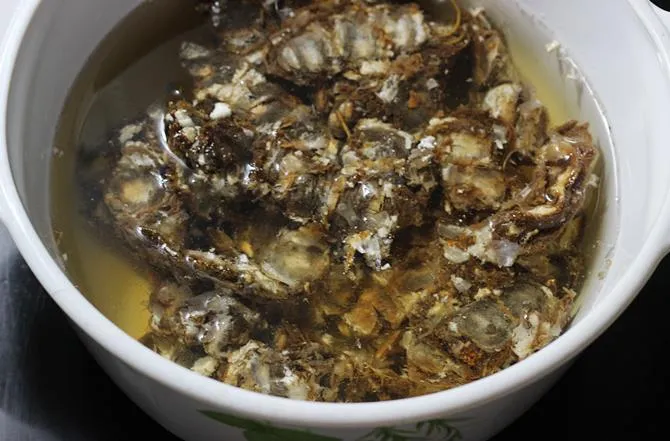
2. Leave it for about 45 minutes to 1 hour. Tamarind turns soft.
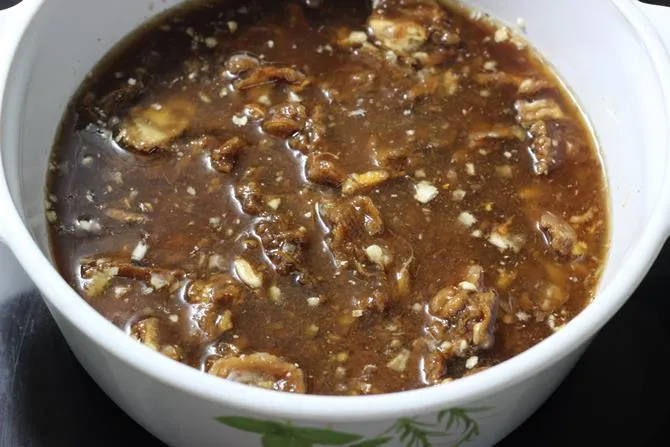
3. A lot of people blend this with additional water. However I prefer not to blend. So showing you how I do it. Squeeze the tamarind well with your hand.
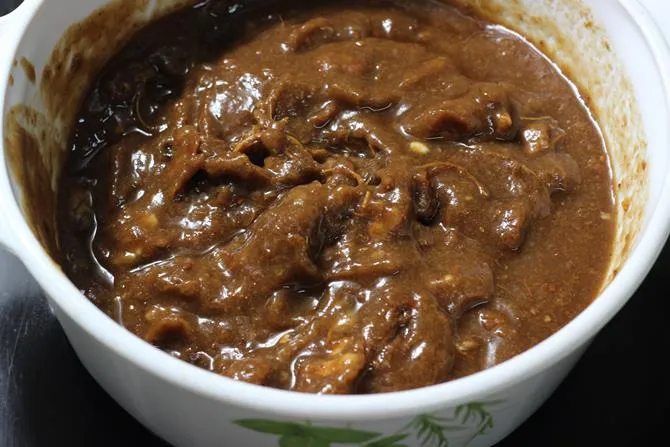
4. Pass this through a strainer to another heavy bottom non reactive pot. you might find stones or shells of the tamarind or seeds, discard them. Do not use a wide pan.
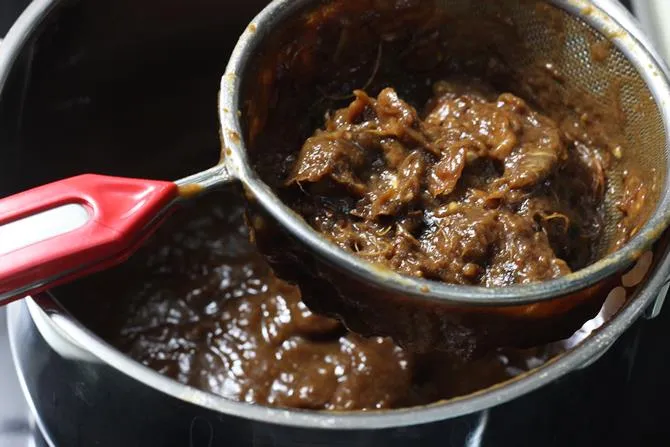
5. Add the pulp back to the tamarind pot, add more water that was set aside and squeeze it again and repeat passing the left over pulp through the filter. You can do this once more if you wish.
Do not overdo, you might get mud or stones, just discard the pulp. or you can even make thin tamarind water and refrigerate to use the next 2 days.
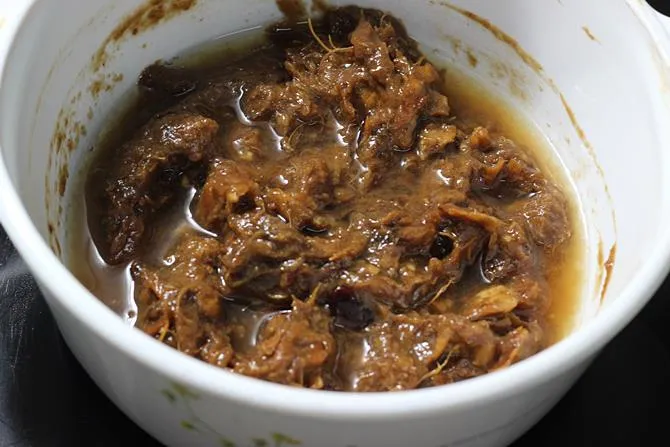
Make the Tamarind Paste
6. Now you see a thick paste.
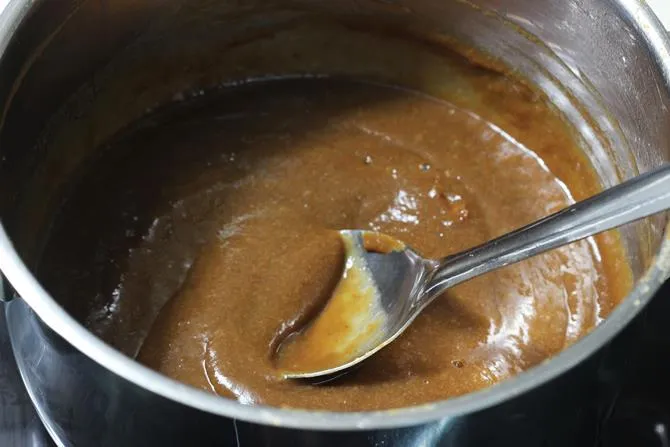
7. Cover it partially and boil on a medium flame until bubbling hot. Be careful as it splashes.
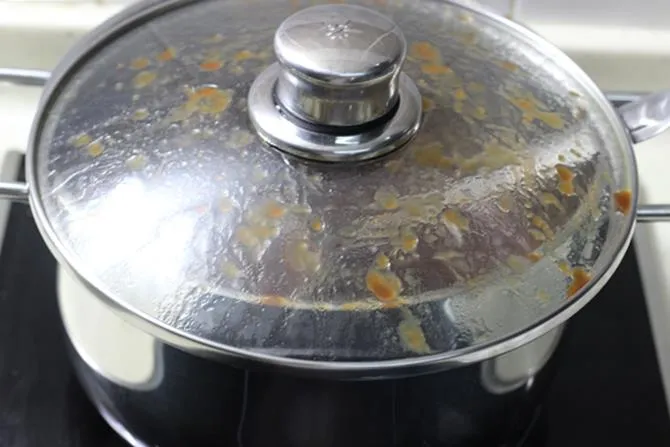
8. Cool the tamarind paste completely and store it in a clean dry glass jar.
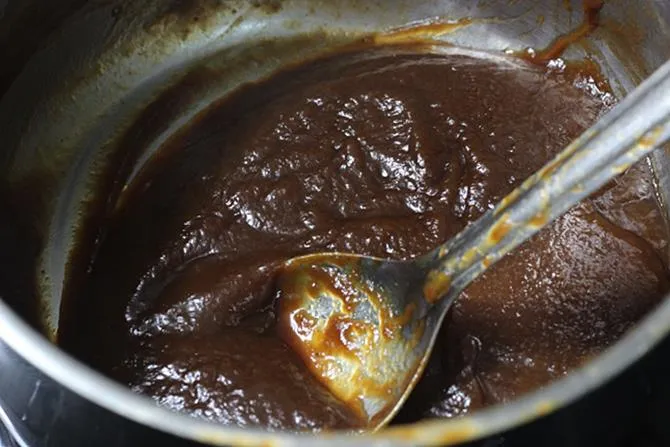
Refrigerate and use within a month. If you want to store longer up to an year, transfer to freezer safe containers and freeze. Do not use plastic jars and spoons. Handle with dry spoons.
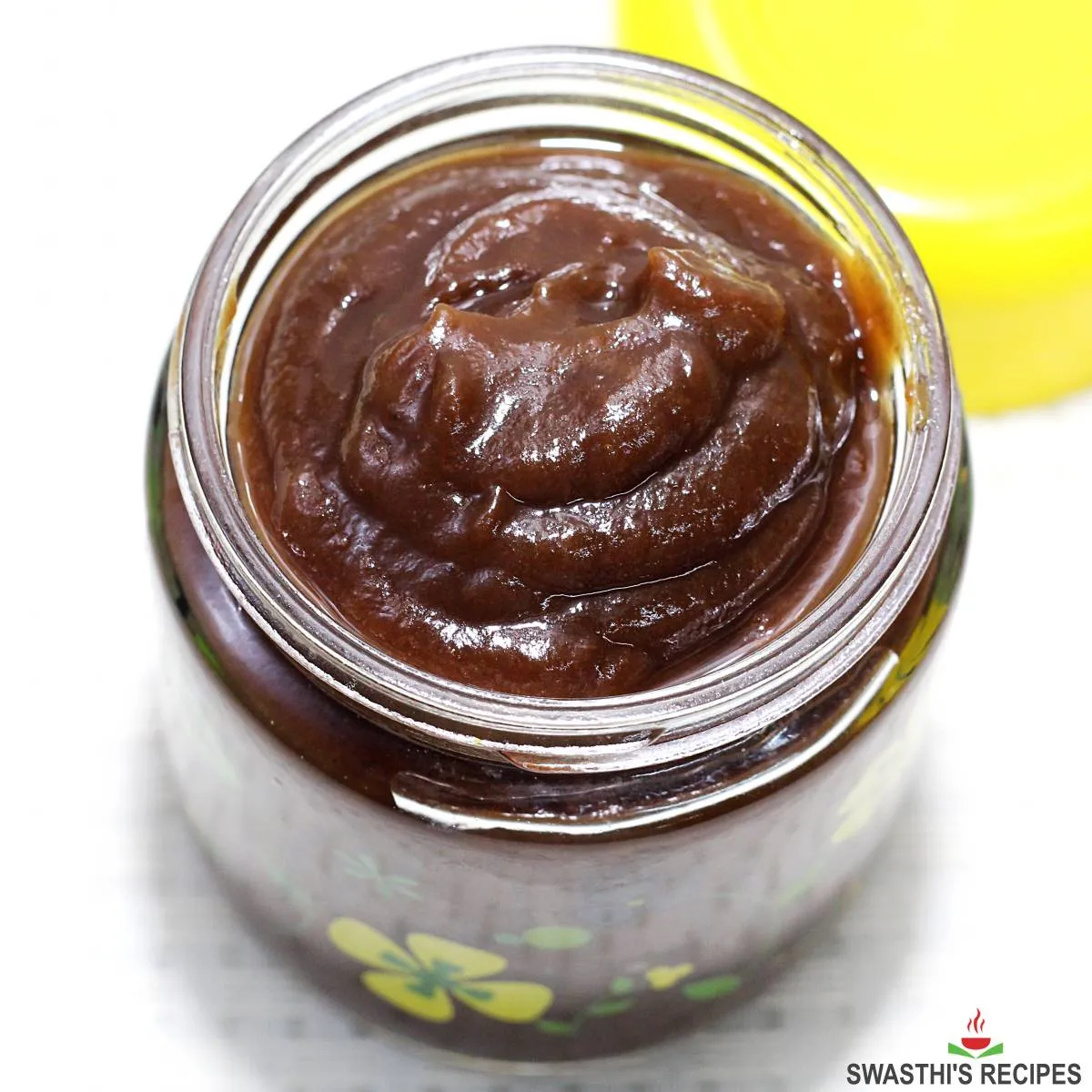
Expert Tips
- Do not overcook tamarind, the flavor and taste is lost. Soak it well to extract as much as possible.
- Do not filter the tamarind till the last bits, you end up getting dirt and stones. Rather discard the last portion to keep the paste clean. You do not want to waste even little bit of the tamarind, you can extract further, by adding 1 cup of water. Squeeze and then filter the thin tamarind water. Refrigerate and use up with in the next 2 days for sambar or pulusu.
- Do not use cookware made of reactive materials like aluminum or copper to cook tamarind.
- Storage – Never store tamarind paste in plastic containers always use glass jars, and if using glass jars with plastic lids, make sure the paste doesn’t touch the lid.
Related Recipes
Recipe Card
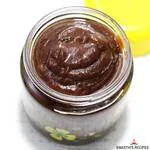
Tamarind Paste Recipe
For best results follow the step-by-step photos above the recipe card
Ingredients (US cup = 240ml )
- 250 grams tamarind pulp (clean & discard, shells and seeds if any)
- 3 cups hot water (use as needed, refer notes)
Instructions
Preparation
- Spread tamarind pulp in a wide bowl. Cover it with hot water. You may need only 1½ to 2 cups. Reserve the rest. Let soak for 45 to 60 mins.
- Option 1 – If your tamarind is clean without debris, you may blend it to a smooth paste in a blender. Add the reserved water as you blend.
- Option 2 – Mash the tamarind as much as possible and pass through a strainer to a deep pot. Add the pulp back to the bowl along with the reserved water. Use only as required, we want to make a thick paste. Squeeze the pulp and pass through the strainer once more.
How to Make Tamarind Paste
- The filtered pulp will be thick. Cover the pot partially and boil for about 5 minutes until bubbling hot. (be careful as it splashes). Cool down and store in air tight glass jar. Refrigerate for 1 month or in the freeze for 1 year.
Notes
- Some variety of tamarind need less water since they are not pulpy.
- Adjust the water quantity depending on how pulpy your tamarind is.
- Always handle the paste with dry hands and spoons for better shelf life.
- Do not use plastic spoons while using.
- Some people add salt, turmeric and oil for a better shelf life. All those are optional.
NUTRITION INFO (estimation only)
© Swasthi’s Recipes
About Swasthi
I’m Swasthi Shreekanth, the recipe developer, food photographer & food writer behind Swasthi’s Recipes. My aim is to help you cook great Indian food with my time-tested recipes. After 2 decades of experience in practical Indian cooking I started this blog to help people cook better & more often at home. Whether you are a novice or an experienced cook I am sure Swasthi’s Recipes will assist you to enhance your cooking skills. More about me
Follow Swasthi’s Recipes

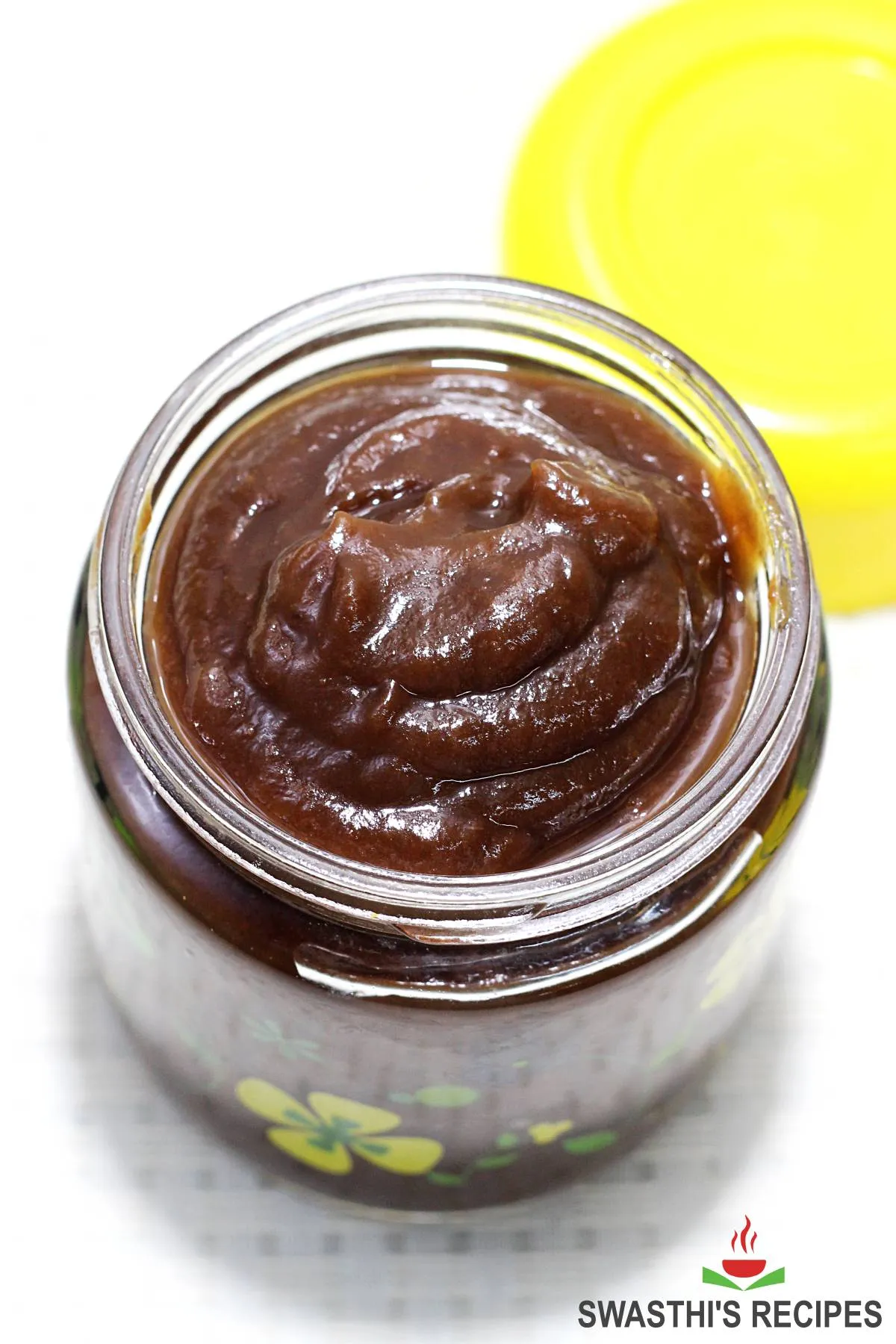
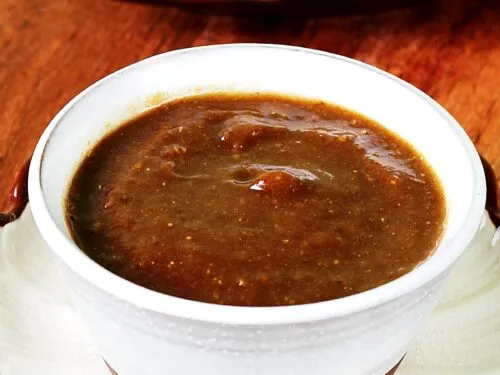
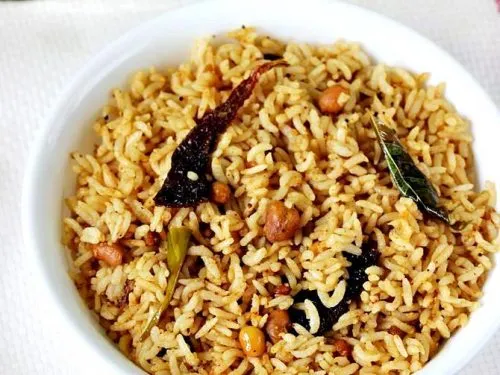
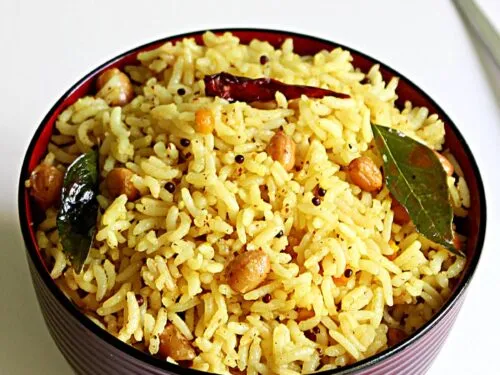

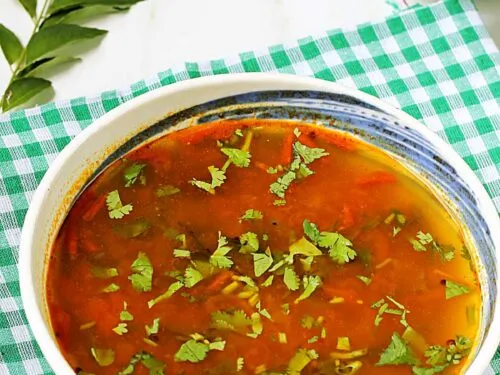

Comments
Wow! This was very helpful. I made a large batch of tamarind paste using this recipe. Freezing it in glass containers and sending over a jar to my sis. Thank you
Thank you,it was very helpful
You can add some salt/vinegar as a preservative.
Yes you can add salt and turmeric. Not sure if vinegar changes the flavor
Hello..do you recommend any specific brand that provides good quality tamarind?..please let me know
Hi Moi
No I use whatever is available. Just look for something without additives
Found your recepies good at first reading today. Shall try in a day or so.
I have a query if you can help.
Can tamarind paste be preserved for 4 to 6 months or more ? I need to send to a friend living abroad. If we add sodium benzoite does the shelf life get extended ? How long will it be useable at room temperature and how long in fridge.
I was looking for a recipe to make my own tamarind paste. The steps and photos are very helpful.
Thank you Shakiyra
Hi Swasthi, I don’t understand why if you overdo making the paste you will probably get stones and mud. And how long the paste should last. I am in California (USA) and I bought something like package of paste about 400g , it is product of Thailand, it was wrapped in plastic (double wrap) and they say expire March 2020???I bought it January 2019. I unwrapped it and as you recommended put it into glass container. So far week later taste the same and look the same. So I am confused, how long this should last. On packaging there is no preservatives listed,
Please answer.
Thank you Ivana
Hi Ivana
Yes overdoing the filtering part may leave the mixture with mud or tiny stones. It all depends on the tamarind. Most packs of tamarind have tiny stones, mud, fiber and even the hard shell of tamarind. overdoing the filtering will pass the mud or tiny stones. I think the pack of tamarind you bought should last for at least 3 month in the fridge. If you are doubtful about it then you can also cook it in 2 tbsps oil until very hot. Cool and then bottle it. I have kept the homemade paste even for 3 months in the fridge without any problems. Hope this helps.
Hello swathi
Where to buy good quality tamarind in Singapore. Please suggest any brand or store
Hi Uma
I buy from mustafa. But i make it to paste and then only use as I feel the quality is not very good
Swasthi, are you in Singapore? pleae connect with me personally
Your recipes is awesome. It always make my dish delicious . Thankyou
welcome Anjali
glad to know you like the recipes
Such a wonderful idea, I must make some paste; it will help with my sambar and pulihora! Your recipes are always a keeper.
Is there a way to increase the shelf life of tamarind paste other than freezing it?